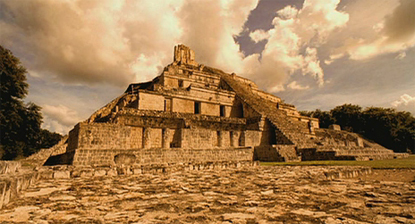In "Apocalypto," Mel Gibson paints a feverish, childish version of the Maya--and mangles decades of scholarship about this complex civilization.
The faux pastoral village:
By 300 B.C., the Maya had developed political and economic systems that were regionally integrated. People living in nearby towns, villages or homesteads--within a day's walk from larger centers--would venture into the city to sell or buy at the market, pay tribute requirements, witness political spectacles or attend to religious devotions. Therefore, populations that lived near larger centers would have been more substantially aware of activities in these capital cities than the movie implies. The villagers would have understood the threat of raids, battles and wars--which were a regular part of Maya society.
The treatment of sacrifice is also inaccurate and misleading. Much of what we see recorded by the Maya is a form of sacrifice known as auto-sacrifice--self-inflicted bloodletting involving piercing ear lobes, fingers, tongues and penises. This practice was often the duty of ruling families, interceding on behalf of the people to the gods. Animal sacrifice was also common. In fact, Gibson's villagers would have conducted such sacrifices for their household and agricultural rites, although we never see them do so in the movie.
Interestingly, murals recently discovered at San Bartolo in Guatemala depict scenes of auto-sacrifice and animal sacrifice. They reveal gods undertaking rites that bring the world into creation. Gibson cribbed these images for his mural scene but saw fit to alter them to convey a view of the Maya involved in wanton human sacrifice.
Whatever the causes, the collapse was primarily of a system of governance, not a self-immolating culture. The movie misses this important distinction by creating a spurious contrast between a rural idyll and an urban miasma of excess and violence. The truth is that within several generations of the Classic Maya collapse, other regal cities with different forms of government would flourish in other parts of the Maya area. Over several millennia, the Maya underwent many cycles of growth and decline, each with its own major cities. The idea, proposed by the movie, that Maya civilization was at the verge of final self-destruction makes for good drama, but does not reflect the depth of this civilization's resilience and history.


No comments:
Post a Comment
Note: Only a member of this blog may post a comment.